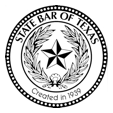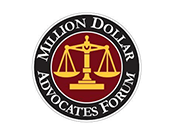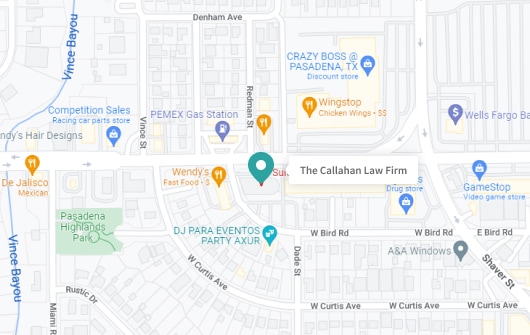Who is at Fault in a T-Bone Accident in Texas?

T-bone accidents are among the most dangerous types of crashes on Texas roads. When a fast-moving vehicle hits the vulnerable side of another car, the force of impact is extreme. Occupants can suffer crushing injuries, internal organ damage, spinal cord trauma, traumatic brain injuries, and more. Many T-bone crashes result in permanent disabilities or death.
Given the enormous harm T-bone wrecks can inflict, determining fault is essential. Pinpointing which driver was negligent makes it possible to hold them accountable and obtain damages to compensate the injured person. Identifying all liable parties also allows victims to pursue maximum compensation for medical treatment, lost income, pain and suffering, and other losses. If you need help with an accident, don’t hesitate to contact The Callahan Law Firm to schedule a no-cost consultation with our car accident lawyers.
Understanding T-Bone Accidents
A T-bone accident, also known as a broadside collision, is a car crash in which the front end of one vehicle impacts the side of another vehicle at an approximately 90-degree angle, forming a T-shape between the vehicles.
T-bone collisions are among the most dangerous types of auto accidents due to the direct impact on the side of one vehicle – the lack of protection on the doors and side panels leads to significantly more severe injuries compared to the front and rear-end collisions.
There are several common causes of T-bone accidents in Texas:
- Running traffic lights: One driver fails to stop at a red light and gets struck by oncoming cross traffic with the right of way. Running red lights is a frequent cause of urban T-bone crashes.
- Distracted driving: Drivers engaging in cell phone use, eating, or other distractions may fail to notice a stop sign or oncoming vehicle and be involved in a T-bone accident.
- Turning with an obstructed view: Limited visibility when turning left or right due to obstacles like buildings, trees, or large vehicles can lead to T-bone crashes.
- Road rage: Aggressive driving behaviors like speeding, tailgating, unsafe lane changes, and failure to yield can result in these collisions.
- Failure to yield right of way: Drivers entering a roadway, turning at intersections, or at stop signs may fail to yield and get struck from the side properly.
Understanding these common causes can help drivers become more vigilant and potentially prevent these severe collisions.
Establishing Fault in a T-Bone Accident
Determining fault in a T-bone accident can be complex, as there are many factors that come into play. Here are some of the key considerations:
- Right of way rules: In Texas, there are clear right of way rules that dictate who has the right to proceed and who must yield. Violating these right of way rules is a major factor in determining fault. For example, if one driver runs a red light or stop sign, they would likely be at fault for causing the car accident.
- Carelessness or negligence: If one or both drivers fail to exercise reasonable care and caution behind the wheel, they may share in the fault. This includes actions like running red lights, distracted driving, or failing to yield when required. Evidence of such behaviors can significantly influence the assignment of fault. For instance, if a driver was texting and ignored a stop sign, leading to a T-bone collision, they would likely be deemed at fault due to negligence.
Establishing fault in a T-bone collision requires a detailed analysis of these factors, often involving police reports, witness statements, and traffic camera footage to determine which driver failed to adhere to traffic laws and driving standards.
Possible challenges in determining fault
Determining fault in traffic accidents, especially in T-bone collisions, can be complicated by several factors that can impact the outcome of legal and insurance claims. Some of the challenges include:
- Disagreements Among Witnesses: Witnesses to an accident may have different perspectives or recall events differently. These discrepancies can lead to conflicting accounts of what happened, complicating the process of determining who was at fault. Sorting through these varying statements to find a consistent narrative can be a major challenge.
- Ambiguity of Physical Evidence: The physical evidence at the scene, such as skid marks, vehicle damage, and road conditions, can sometimes be ambiguous or inconclusive. For example, damage to the vehicles might not clearly indicate the dynamics of the crash, or skid marks might have been obscured by weather conditions or other traffic.
Due to these challenges, having skilled legal representation is crucial. Lawyers have access to resources such as accident reconstruction experts and forensic analysts who can provide clarity on the accident dynamics and contribute to a stronger case for their client.
Liability and Compensation in T-Bone Accidents
After a T-bone accident, identifying the party at fault involves analyzing the circumstances leading up to the collision. Various parties could potentially be held responsible, depending on the specifics of the incident:
- The Driver: Most commonly, one of the drivers involved is at fault. This could be due to failing to yield the right of way, running a red light, speeding, distracted driving, or other negligent behaviors. For instance, if a driver ignores a stop sign and drives into the side of another car legally crossing the intersection, they would typically be found at fault.
- Multiple Drivers: In some cases, multiple drivers might share responsibility for the accident.
- Local Government or Municipalities: If poor road design, inadequate signage, or lack of proper traffic signals contributed to the accident, the local government responsible for road maintenance and design could be considered at fault.
- Car Manufacturers: Occasionally, a defect in one of the vehicles, such as brake failure or a malfunctioning traffic signal, can lead to a T-bone accident.
- Employers: If the driver at fault was working at the time of the accident, such as a delivery driver or a commercial vehicle operator, the employer might also be held responsible. This could be due to factors like failing to enforce proper driving hours, inadequate training, or poor vehicle maintenance. The employer could also be responsible because of vicarious liability laws.
- Third Parties: Other parties like pedestrians or cyclists might contribute to a T-bone accident by creating a situation that causes one of the drivers to react abruptly and collide with another vehicle.
- The Plaintiff: In some T-bone accident cases, the plaintiff—the person bringing the lawsuit—may also be at fault or partially at fault for the incident. This can occur if the plaintiff engaged in negligent behavior, such as running a red light, speeding, or not yielding the right of way, which contributed to the collision.
Comparative Negligence
Under the principle of comparative negligence, the court will determine the percentage of fault attributable to each party involved. If the plaintiff is found partially at fault, their compensation may be reduced by their percentage of responsibility for the accident. This principle ensures that damages are allocated fairly based on each party’s contribution to the cause of the accident. If the plaintiff is more than 50% responsible for the accident, they cannot obtain any damages in a lawsuit.

Types of Compensation Available for Those Injured in T-bone Accidents
Here are the primary forms of compensation available for those injured in T-bone accidents:
- Medical Expenses
- Lost Wages
- Decreased Earning Capacity
- Property Damage
- Rehabilitation Costs
- Pain and Suffering
- Mental Anguish
- Punitive Damages
The compensation listed above may be different by definition, but they all serve a greater purpose: to restore the injured party to the financial position they were in before the accident and address the broader impacts of their injuries.
Seeking Legal Assistance in T-Bone Accident Cases
Being involved in a T-bone accident can be a traumatic and overwhelming experience, with many injured parties left confused about their rights and options. This is why it is critical to seek legal assistance from an experienced personal injury attorney after a T-bone collision. An attorney can provide invaluable help with:
Investigating the Accident: An attorney will launch a thorough investigation into the accident, including visiting the scene, taking photos, interviewing witnesses, obtaining police reports, and reconstructing how the crash occurred.
Proving Fault and Negligence: Establishing fault and negligence is complex, but it must be done to receive compensation. An attorney will use evidence from their investigation to build a compelling case proving the other driver’s fault.
Navigating the Claims Process: Insurance companies use tricky tactics to minimize payouts. A lawyer levels the playing field and deals with insurance companies so their clients don’t have to.
Filing a Lawsuit if Needed: If a fair settlement cannot be reached, a personal injury lawsuit may be necessary, and an experienced attorney handles all aspects of litigation. Most cases settle before trial, but lawyers aren’t afraid to take a case to court if needed.
The bottom line is that a T-bone accident lawyer protects your rights, does the legwork, deals with the insurance companies, and has the skill and tenacity to get you the maximum compensation you deserve. For help, contact The Callahan Law Firm today.
Contact The Callahan Law Firm Today for Help With a T-Bone Accident Claim
The stakes are high after a serious T-bone collision. Injured parties face physical trauma, emotional stress, financial uncertainty, and a complex legal process, and seeking skilled legal representation maximizes your chances of a favorable outcome. An attorney thoroughly examines liability and works tirelessly so you can focus on healing and recovery. Don’t leave compensation to chance – protect your rights by contacting The Callahan Law Firm today to schedule a no-cost consultation with a Houston car accident lawyer.
FAQ
What is a T-bone car accident?
A T-bone car accident, also known as a side-impact collision, occurs when the front of one vehicle strikes the side of another, forming a “T” shape at the point of impact.
What happens to your body when you get T-boned?
In a T-bone accident, individuals can suffer severe injuries due to the direct side impact. Common injuries include head and neck trauma, broken ribs, pelvic injuries, and internal organ damage.

Michael S Callahan is an attorney and founder of The Callahan Law Firm. He focuses his practice on representing individuals and families in personal injury cases involving motor vehicle and truck accidents, workplace accidents and defective products. With over 25 years of experience, he is dedicated to fighting on behalf of people whose lives have been forever altered by the negligence and carelessness of corporations and individuals. Originally trained as a mechanical engineer, Michael has been practicing law and fighting for justice for those who need it most since 1994. He is board-certified in Personal Injury Trial Law by the Texas Board of Legal Specialization and a member of various esteemed legal associations. Outside of work, Michael enjoys spending quality time with his family, outdoor activities, and continually striving to improve as a trial lawyer and human being.











